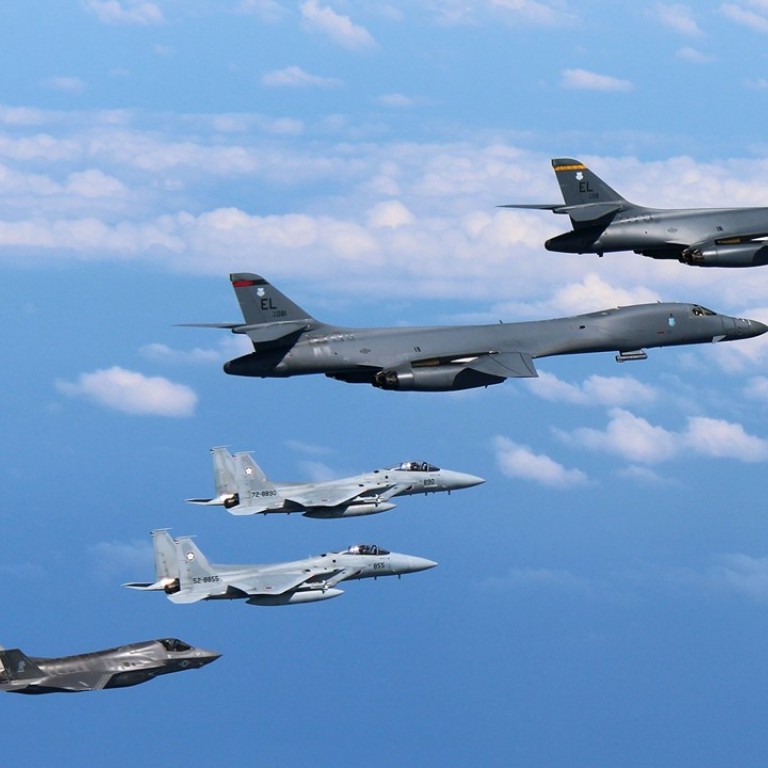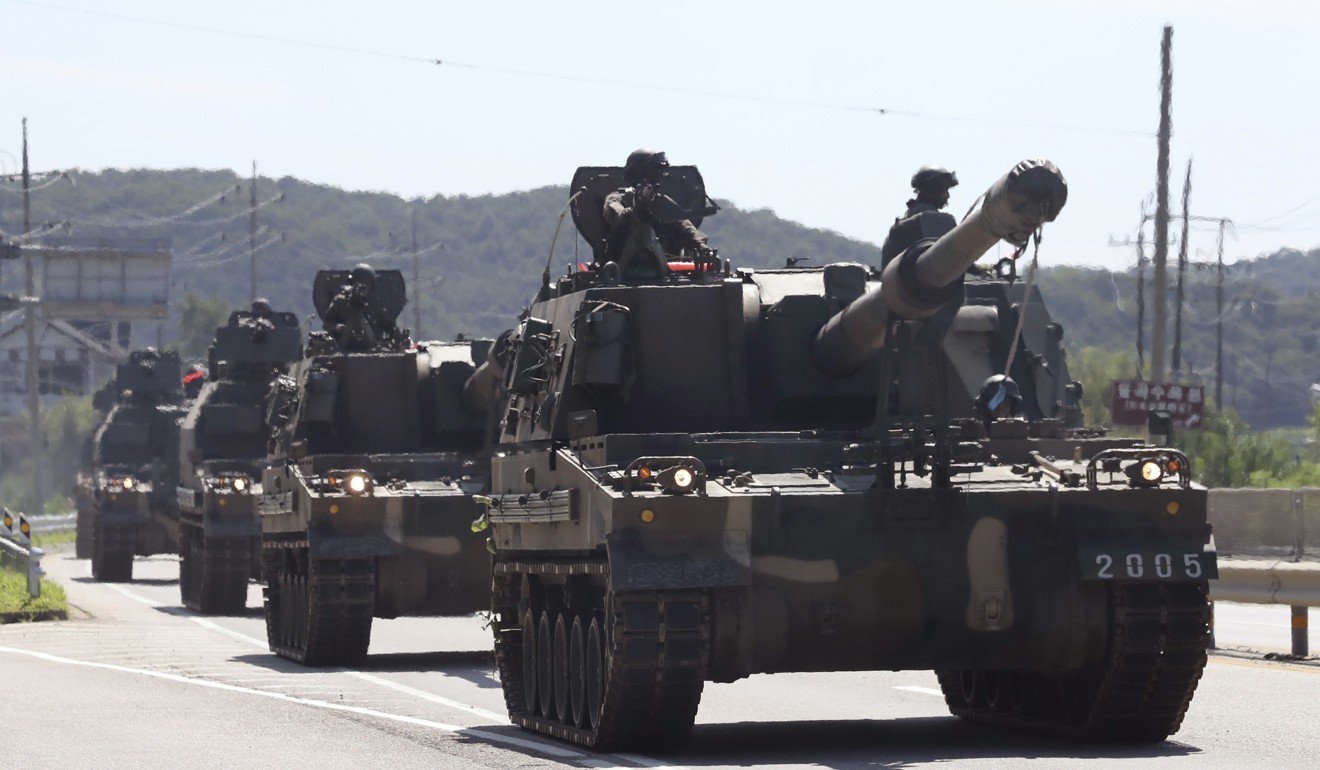
US, Seoul and Japan conduct bombing drills over Korean peninsula, sending ‘solidarity’ message to Pyongyang
The exercises involved US B-1 and stealth bombers, as well as Japanese and South Korean fighter jets
South Korean and Japanese jets joined exercises with two supersonic US B-1B bombers above and near the Korean peninsula on Thursday, two days after North Korea sharply raised tension by firing a missile over Japan.
The drills, involving four US stealth F-35B jets as well as South Korean and Japanese fighter jets, came at the end of annual US-South Korea military exercises focused mainly on computer simulations.
“North Korea’s actions are a threat to our allies, partners and homeland, and their destabilising actions will be met accordingly,” said General Terrence J O’Shaughnessy, Pacific Air Forces Commander, who made an unscheduled visit to Japan.

This complex mission clearly demonstrates our solidarity with our allies ... to defend against this common regional threat
North Korea has been working to develop a nuclear-tipped missile capable of hitting the United States and has recently threatened to land missiles near the US Pacific territory of Guam.
On Monday, North Korea, which sees the exercises as preparations for invasion, raised the stakes in its stand-off with the United States and its allies by firing an intermediate-range missile over Japan.
On Thursday, its official news agency, KCNA, denounced the military drills in traditionally robust fashion, calling them “the rash act of those taken aback” by the missile test, which it described as “the first military operation in the Pacific.”
President Donald Trump, who has warned that the US military is “locked and loaded” in case of North Korean provocation, reacted angrily to the latest missile test, declaring on Twitter that “talking is not the answer” to resolving the crisis over North Korea’s weapons programmes.
US Defence Secretary Jim Mattis was quick on Wednesday to stress that a diplomatic solution remained possible, but on Thursday he told reporters he agreed with Trump that Washington “should not be talking right now to a nation that is firing missiles over the top of Japan, an ally.”
White House spokeswoman Sarah Sanders reiterated at a regular briefing on Thursday that all options such as diplomatic, economic and military remained on the table.
Japanese Defence Minister Itsunori Onodera spoke to Mattis by telephone and agreed to keep putting pressure on North Korea in a “visible” form, Japan’s defence ministry said.
Japanese Prime Shinzo Abe said he and visiting British Prime Minister Theresa May agreed to urge China, North Korea’s lone major ally, to do more to rein in North Korea.
May and Abe also discussed the possibility of adopting a new UN Security Council resolution on North Korea, a British government source said.

The 15-member UN Security Council on Tuesday condemned the firing of the missile over Japan as “outrageous” and demanded that North Korea halt its weapons programmes. But the US-drafted statement did not threaten new sanctions.
Japan has been urging Washington to propose new Security Council sanctions, which diplomats said could target North Korean labourers working abroad, oil supplies and textile exports.
However, diplomats expect resistance from Russia and fellow veto-wielding power China, particularly given that new measures were only announced on August 5 after North Korea tested its first two intercontinental ballistic missiles in July.
A US ban on travel by Americans to North Korea comes into effect on Friday, a step announced after the death of a US student soon after his release from a 15-year prison sentence in the country, where three other Americans are still detained.
China repeated a call on Thursday for restraint by all parties.
Defence ministry spokesman Ren Guoqiang told a monthly briefing China would never allow war or chaos on the Korean peninsula, its doorstep, and military means were not an option.
“China strongly demands all sides to exercise restraint and remain calm and not do anything to worsen tensions,” Ren said, adding that Chinese forces were maintaining a normal state of alert along the North Korean border.

Chinese foreign ministry spokeswoman Hua Chunying said the situation on the peninsula was serious.
“The current tense situation on the peninsula isn’t a screenplay or a video game,” she told reporters. “It’s real, and is an immense and serious issue that directly involves the safety of people from both the north and south of the peninsula, as well as peace and stability of the entire region.”

